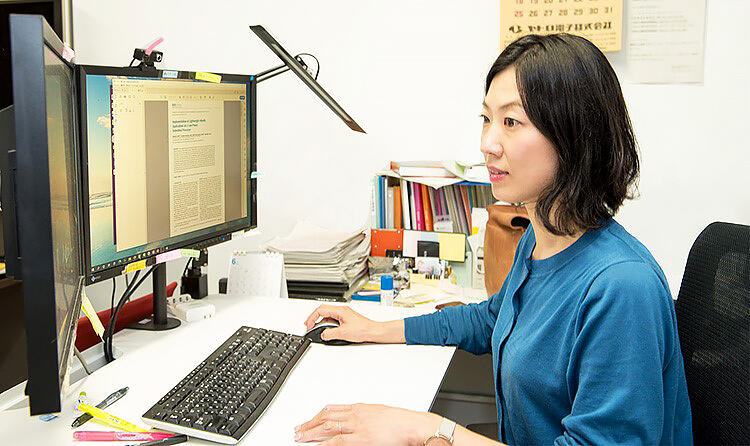
"Society 5.0" is the society we should aim for, as stated in the 2021 edition of the White Paper on Science, Technology and Innovation. What kind of society will it be, and what type of science and technology will be required to realize it? We asked Yuko Hara, Associate Professor at the Tokyo Institute of Technology's School of Engineering, who is drawing worldwide attention for her success in developing an ultra-compact, power-saving CPU (central processing unit, or the brain of a computer), about what the Society 5.0 will be like, and how it relates to her research.
Ultra-compact at just 1 mm and power-saving CPU
The society envisioned in Society 5.0 is "a human-centered society that achieves both economic development and the resolution of social issues through a system that highly integrates cyberspace (virtual space) and physical space (real space)." In other words, it is a society where all people can equally receive services realized by science and technology like computers and the internet, where people can live safer lives, and where everyone can realize happiness in different ways for different people.
Hara conducts her research seeing fairness, equality, and unbiased information and services as essential concepts. In terms of science and technology, she believes that Society 5.0 will overlap with IoT (a society where everything connects to the internet). Let's take a look at what this means, along with her research contents.
The use of terminals such as computers and tablets varies from person to person, as some edit videos, while others only browse the internet. The ability to support such a wide range of uses is called "general-purpose." In contrast, Hara's research focuses on what is known as "embedded (systems)," where the purpose of using the device is determined at the time of design. Both hardware and software are designed for specific purposes, which reduces waste, size, and power consumption.
The research bore fruit in the form of an ultra-compact, power-saving CPU, which went public in February of 2021. It is only one millimeter in length and width but contains about 9,000 logic gates (ultra-small unit parts of electronic circuits) and about 6 kilobytes of memory. Moreover, the CPU can continue to function for about 100 days on a single button battery. It is excellent in terms of power-saving as well.
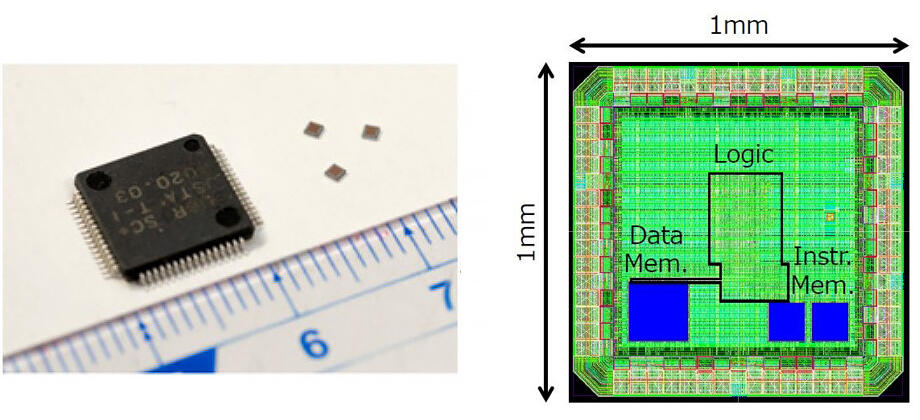
(Provided by Tokyo Institute of Technology)
Indispensable for autonomous and distributed edge terminals
Why are such ultra-compact and power-saving CPUs needed?
At present, data collected from terminals connected to the network around us (edge terminals) mainly go to the cloud (a group of computers in a remote location), where analysis and simulation are centrally performed to return the processing results (cloud computing). The information is centralized in the cloud and not processed at the edge terminals.
However, if the IoT progresses further and many more things get connected to the internet, the volume of data will be huge. It will then take more time and cost for the edge terminals to receive the processing results. As a result, edge computing, which performs autonomous distributed information processing at or near edge terminals, will become indispensable.
"This is just an example; In the event of a tsunami, it will be necessary to have a supercomputer in the cloud to simulate how far the wave will travel inland. However, when an earthquake occurs and a tsunami actually hits, everyone panics, the network gets congested, and real-time decisions are needed, so you cannot rely on the cloud. Even in such a situation, a system and technology that can guide us safely is necessary, and that will be processed on the edge side," Hara explains the roles of the cloud and the edge taking disaster prevention as an example.
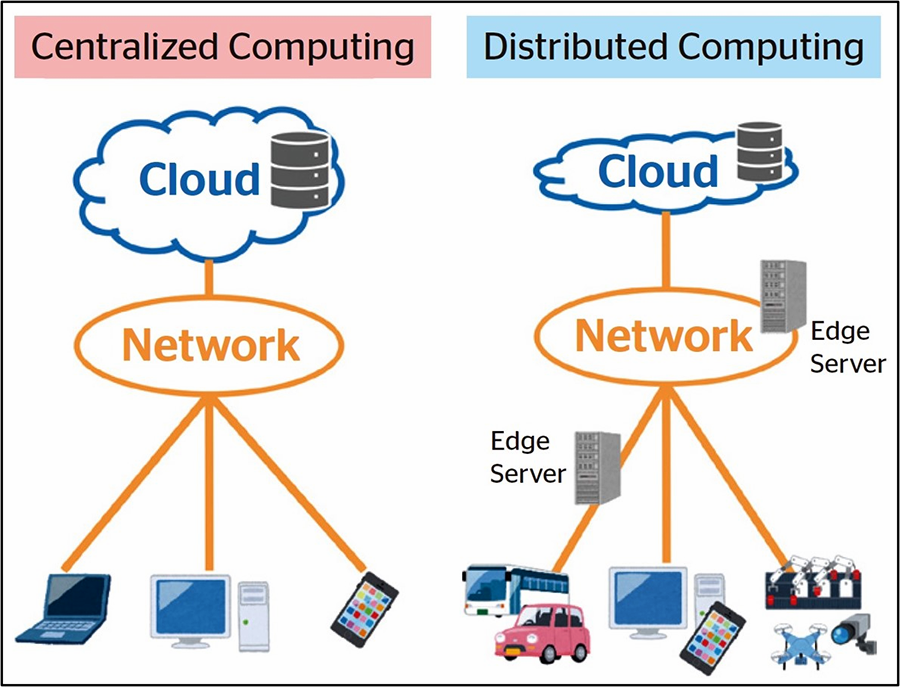
(Source: Ministry of Internal Affairs and Communications "Research Study on Informatization in Heisei Era" (March 2019), translated by JST editorial department.)
The global market for edge computing is expected to grow at a rapid rate. CPUs for edge terminals to date have been providing higher performance at the cost of consuming more power. Hara believes that CPUs that, depending on their application, can efficiently achieve data processing with low-power consumption and are lightweight will be needed in the future. Ultra-compact and power-saving CPUs such as the one developed in this research are essential for the IoT of small edge terminals.
Healthcare will become a crucial service linked by IoT
Hara envisions healthcare (health management) as the primary purpose of the newly developed CPU. It will be combined with sensors for heart rate, blood pressure, brain waves, electromyography, and so on, and incorporated into wearable terminals. If you wear such a device all the time, you can notice physical abnormalities early on. The information can then be passed on to your family members or home doctor via smartphone.
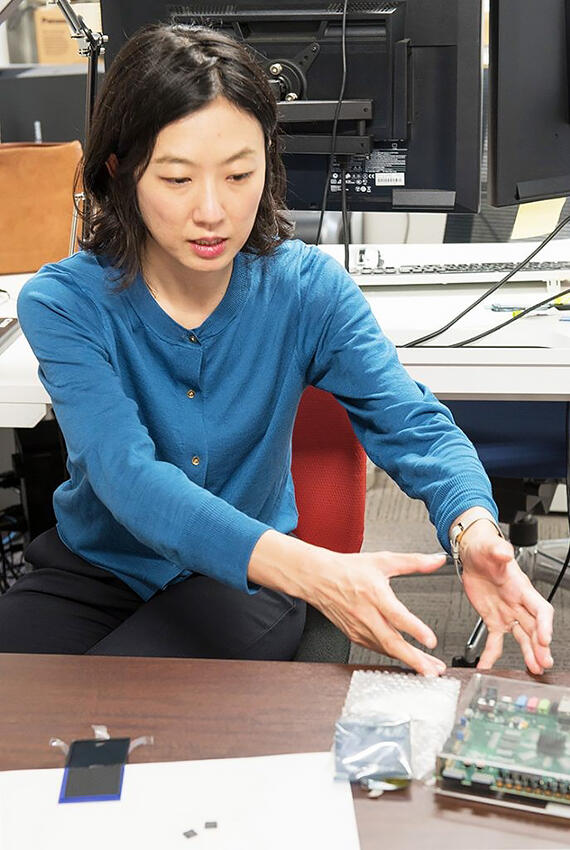
"Even if Society 5.0 is realized, I think everyone will be concerned about their own health and that of their families. I want people to be free from the anxiety and stress of being unaware of a serious illness or being uninformed of the disease name or its cause due to lack of access to a specialist depending on where they live. I myself had a hard time not knowing what my family member's illness was for a long time. I believe that healthcare will be a key service of IoT," says Hara.
However, there are quite a few problems to be solved; one is a security issue. For example, if someone reads biometric data indicating signs of illness through the leaking of electromagnetic waves from a terminal, it could lead to discrimination and prejudice. Therefore, Hara also plans to develop security technology to support the IoT's advancement.
Moving toward a prosperous society, but there are other concerns in the meantime
As a researcher in information and communication technology, what does Hara envision for a society in which cyberspace and physical space are highly integrated?
Hara says that while she is concerned about job loss due to the shift to artificial intelligence (AI), she also sees significant benefits. "Machines will replace work that can be done manually. We can also suppose that AI can supplement human labor in search and rescue at dangerous disaster and distress sites, as well as at accident-prone construction sites. In that case, I think there will be significant benefits in terms of the economy and safety." She predicts that this will lead to a more affluent society, where people can focus on jobs that cannot be done manually and create new things.
On the other hand, the concern about the increasing self-responsibility of people is huge. "As the IoT progresses, we will see more and more systems getting customized for individuals and specific applications. Users will then have to understand the advantages and disadvantages. You would hate to hear things like, 'It's your fault for not looking into it carefully,' with no questions asked. So, we need to create a system where the disadvantages do not become the individual's responsibility." This problem cannot be solved by science and technology alone. As well as the security issue mentioned earlier, Hara believes that we will need to rethink our society, including legislation development, using knowledge of the humanities and social sciences.
I want people to be interested in various things
We asked Hara to give a message to young people. She said, "Society 5.0 is a society where various things are involved in a complex way. Therefore, it would be good to get interested in multiple things, not like engineering students only interested in engineering matters. If your interests are too broad to narrow down, I think you should decide on a focus while trying not to lose your sense of curiosity."
Hara pursues her research and development with a clear vision in mind, aiming to create a society where everyone can realize the happiness they seek and where technology stays by their side. We can't wait to see what kind of research results she will present next.
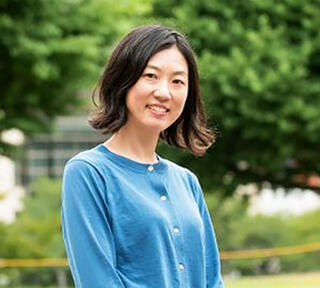
Yuko Hara
Associate Professor, Department of Information and Communications Engineering, School of Engineering, Tokyo Institute of Technology
Received a Ph.D. in information science from Nagoya University in 2010. She was a Japan Society for the Promotion of Science (JSPS) Postdoctoral Research Fellow from 2010 to 2012. In 2012, she joined Nara Institute of Science and Technology as an Assistant Professor. Since 2014, she has been with Tokyo Institute of Technology, where she is currently an Associate Professor.
Her research interests include hardware/software co-design and designing automation technologies for embedded/IoT systems.
[Column] What will the society of the future, Society 5.0, be like?
What kind of society will the highly integrated cyber (virtual) space and physical (real) space envisioned in Society 5.0 be? Let's take a look at disaster prevention, medical care, and transportation as examples. The illustrations below are only a tiny part of the whole picture. We hope you will join us in thinking about how we can solve the social issues at hand and create a society where every person feels happy.
◆ Disaster prevention
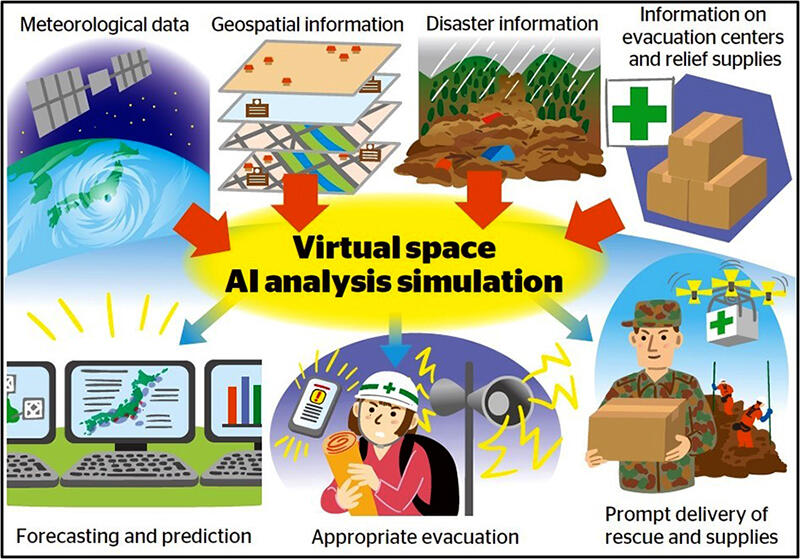
(Created by JST editorial department)
Data such as meteorological information, topography, maps, and past disasters will be analyzed by supercomputers on the cloud, and damage will be predicted through simulations. Supercomputers will also play an active role in predicting climate change and clarifying the causes. On the other hand, when a disaster occurs, terminals owned by individuals and systems installed in the city will autonomously analyze information of a relatively small area and indicate the optimal time of evacuation, evacuation routes, and evacuation sites. In addition, safe and rapid disaster relief and smooth delivery of relief supplies will be possible through the linkage of terminals around us and the cloud.
◆ Medical care
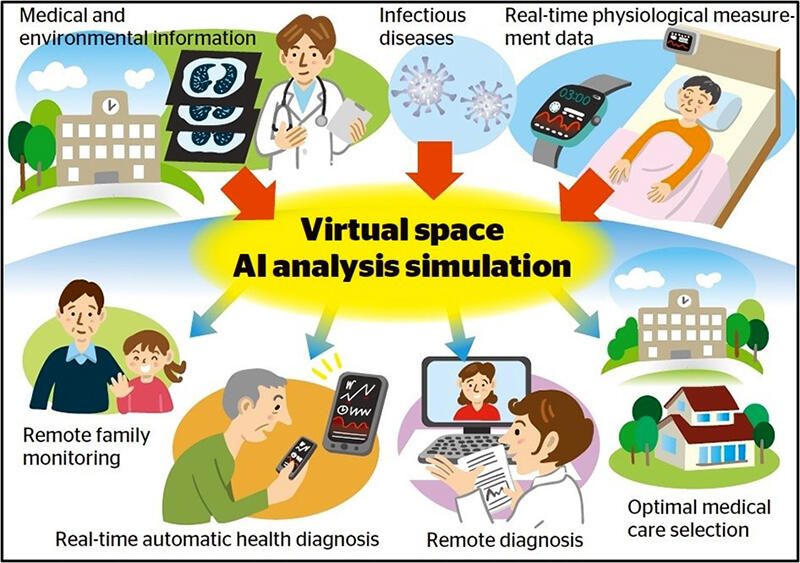
(Created by JST editorial department)
Test data at medical institutions, real-time measurement data from individual terminals, and infectious disease information from all over the world will be analyzed on the cloud. Those data will help in disease detection, accurate diagnosis, optimal treatment, and effective prevention. Online medical practice where specialists see patients in remote areas and surgery from a remote location will also become possible. Information detected by the terminal in real-time will be passed on to family members and medical institutions via the cloud, which will lead to warm and considerate medical care.
◆ Transportation
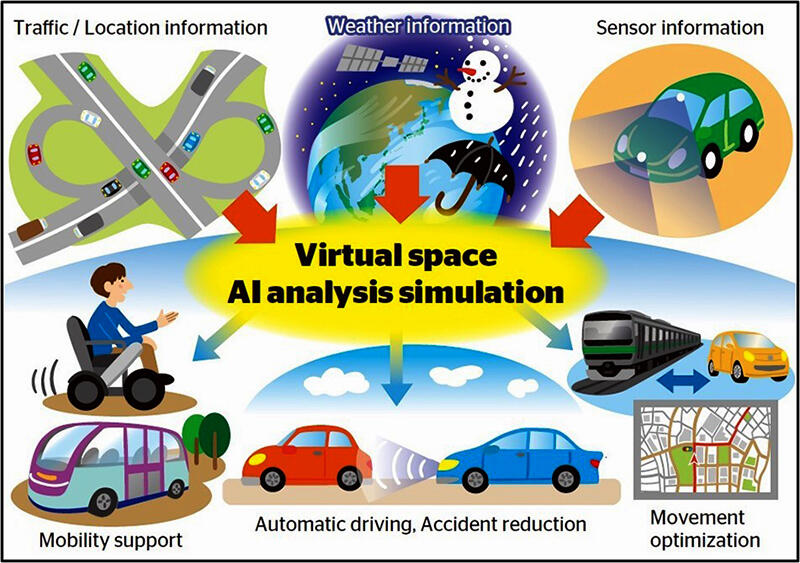
(Created by JST editorial department)
Cameras and sensors installed on roads or in vehicles will monitor traffic volume and road conditions. The data will be aggregated into a high-performance computer on the cloud. The computer will also take in the weather data and other parameters. Artificial intelligence (AI) will then conduct a comprehensive analysis to provide vehicles and drivers on the road, or those about to move, with traffic information that enables smooth travel. The terminals installed or worn on respective cars or people will autonomously perform automatic driving and collision prevention functions and exchange data with systems on the cloud as needed to realize safer and more comfortable travel.
Original article was provided by the Science Portal and has been translated by Science Japan.




